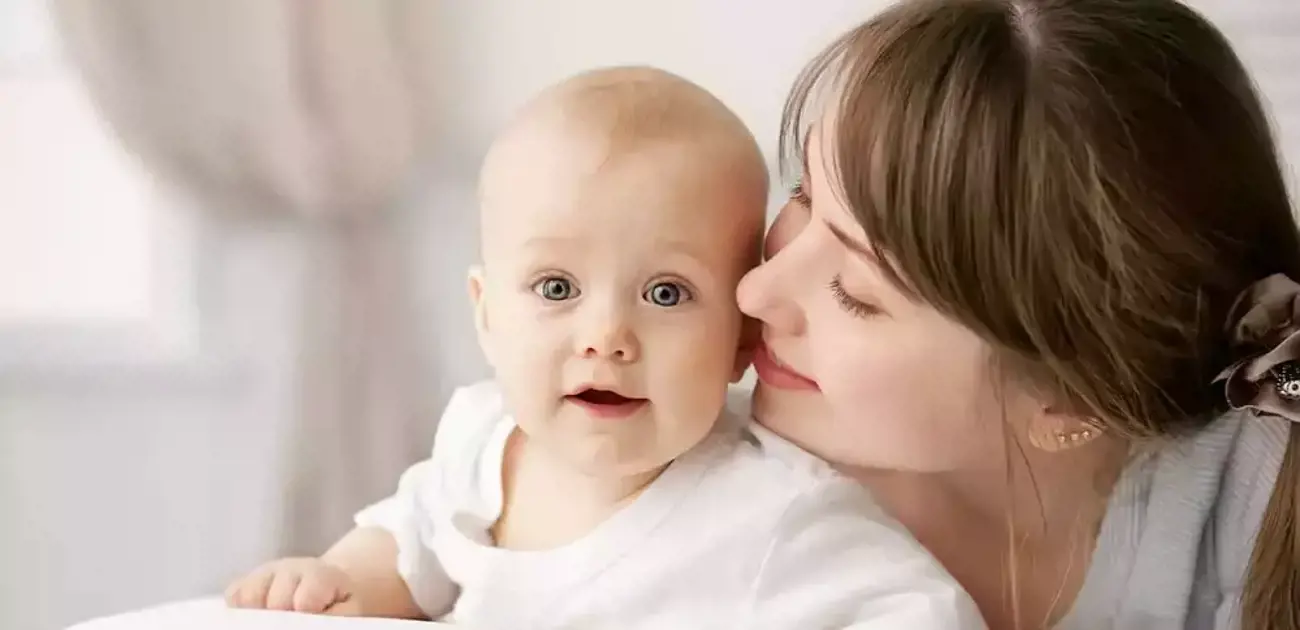Play is a wonderful way to bond with your baby, and as you’re sharing time and toys with your little one, research shows that you’re also sharing a brain connection.
Princeton Baby Lab has conducted the first study of how baby and grown-up brains interact during natural play, and they’ve found that bubs and adults really do get on the same wavelength when they share eye contact, toys, books and songs.
The researchers have established that baby and adult brain activity synchs up during play, with neural activity levels rising and falling at the same times, so let’s look at this American study in more detail.
Why did Princeton University undertake this study?
Previous research has shown that adult brains sync up when they watch movies or listen to stories together, but little was known about how this ‘neural synchrony’ developed in the first years of life.
Neural synchrony has key implications for social development and language learning, so the Princeton Baby Lab researchers conducted this research to learn more about the relationship between baby and grown-up brains at a crucial time in little people’s development.
How did they measure the brain activity of baby and adult?
Babies are a lot wrigglier than adults, so the researchers had to find a real-life, face-to-face way of measuring brain activity as the two ages played together.
Other ‘neural coupling’ studies have involved adults having their brains individually scanned by functional magnetic resonance imaging (fMRI) while watching movies or listening to stories. But for this study, the researchers developed a new ‘dual-brain neuroimaging system’ that used ‘functional near-infrared spectroscopy (fNIRS)’ to record the brain activity of baby and adult at the same time.
This sounds complicated, but basically, it was a safe and practical way for researchers to record oxygenation in the blood to measure brain activity.
While babies and adults played with toys, sang songs and read a book, they wore a cap which enabled researchers to measure their simultaneous brain activity.
The caps collected data from 57 channels of the brain known to be involved in language processing, prediction and the understanding of other people’s perspectives.
How did the study play out?
To collect the brain data, this study involved one adult interacting with 42 infants and toddlers, wearing the caps. Twenty-one children had to be excluded from the study because they ‘squirmed excessively’ and three refused to wear the cap, leaving 18 youngsters (between the ages of nine months and 15 months) participating.
The study had two parts. In one, the adult experimenter spent five minutes interacting directly with the child while they sat on their parent’s lap. During this face-to-face time, the experimenter and baby played with toys, sang nursery rhymes or read Goodnight Moon.
For the other part, the experimenter turned to their side and told another adult a story, while the baby played quietly with their mum or dad.
What were the results of the study?
When the data was analysed, the researchers found that:
- During the face-to-face sessions, the baby’s brain and adult experimenter’s brain were synchronised in several areas ‘known to be involved in high-level understanding of the world’ (which might have helped the babies understand the overall meaning of the book or analyse the motives of the grown-up reading to them).
- This brain syncing disappeared, however, in the sessions where the baby and adult were turned away from each other and interacting quietly with other people.
The above findings supported the researchers’ suspicions, but there were a couple of surprises:
- Although the prefrontal cortex (associated with learning, planning and executive functioning) is thought to be quite underdeveloped in babies, this part of the brain actually showed the strongest coupling with the adult brain.
- It was also interesting to see that the baby brain activity was often ‘leading’ the adult brain by a few seconds. So, instead of passively getting input from the grown-up brain, the infant brain might have been guiding the adult brain towards the next focus (e.g. suggesting they pick up a certain toy or which words to say).
Elise Piazza is a co-author of the study, and she describes the two brains as forming a ‘feedback loop’.
She explains that, ‘The adult’s brain seemed to predict when the infants would smile, the infants’ brains anticipated when the adult would use more ‘baby talk,’ and both brains tracked joint eye contact and joint attention to toys. So, when a baby and adult play together, their brains influence each other in dynamic ways.’
What does this research mean, going forward?
The researchers are now investigating how neural coupling relates to preschoolers’ early language learning.
There’s also the idea that this ‘two-brain approach’ could help us understand how brain synchronisation breaks down between care-givers and children with ‘atypical development’ (e.g. those with autism).
In addition, insights around neural syncing could help educators better teach children with diverse brains.
Do emotions play a role in brain synchrony?
According to separate research by the University of Cambridge it does appear that emotions can affect the strength of a neural connection between mother and baby.
This English study suggests that a happier mum will form a stronger brain connection with her baby, and that this powerful bond may help the baby to learn and help its brain to develop.
The leader of this study, Dr Vicky Leong says, ‘When the neural connection between mothers and babies is strong, babies are more receptive and ready to learn from their mothers.’ As such, she encourages parents to use a positive emotional tone when interacting with their baby to connect better and stimulate the development of their baby’s mental capacity.
Both studies remind us that the brain is a truly amazing thing, and they reinforce the importance of learning through play.
Parents and care-givers play a crucial role in helping babies learn, so why not pull up a play mat, tip out the toy box and put your brains together!


































